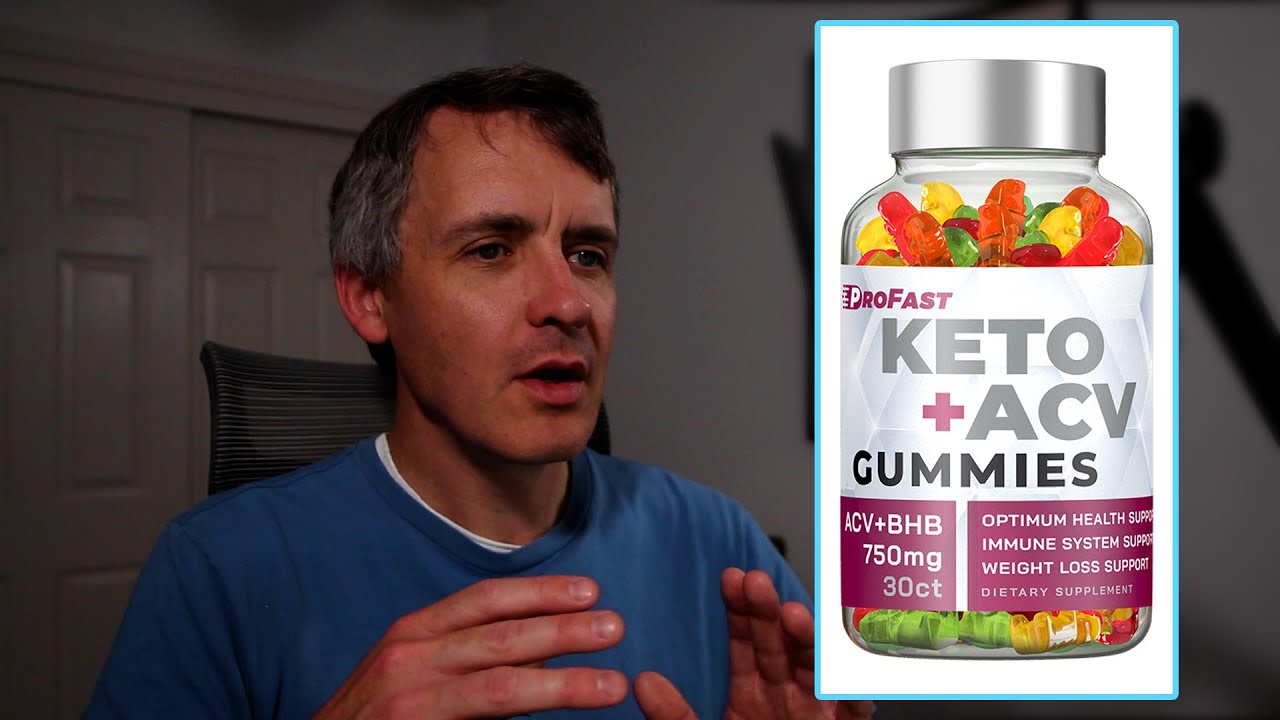3 Peptides You Need To Add To Your Glp1s To Supercharge Your Weight Loss Results Glp1
Weight Controlapple Cider Vinegar Gummies
अपने आहार में जरूर करें यह बदलाव || Swami Ramdev Make these changes in your diet || Swami Ramdev #SwamiRamdevAyurvedicTips #HealthyDiet #HealthTips ___________________________________________________________________________ Visit us on Website: https://www.bharatswabhimantrust.org YouTube : Bharat Swabhiman - https://www.youtube.com/user/TheBHARATSWABHIMAN Swami Ramdev - https://www.youtube.com/c/SwamiRamdevOfficial Acharya Balkrishna - https://www.youtube.com/c/acharyabalkrishan Patanjali Ayurved - https://www.youtube.com/user/patanjaliayurveda I Support Baba Ramdev - http://www.youtube.com/c/ISupportBabaRamdev Facebook: Swami Ramdev - https://www.facebook.com/swami.ramdev Bharat Swabhiman - https://www.facebook.com/bharatswabhi... Acharya Balkrishna - https://www.facebook.com/AcharyaBalkr... Follow us on Twitter: Swami Ramdev - https://twitter.com/yogrishiramdev Bharat Swabhiman - https://twitter.com/bst_official Instagram: Swami Ramdev - https://www.instagram.com/swaamiramdev Acharya Balkrishna - https://www.instagram.com/acharya_balkrishna Telegram : Swami Ramdev - https://t.me/OfficeofSwamiRamdev
The Liquid Path to Ketosis: Shark Tank’s Keto Liquid Innovation
Jessica Simpson, a well-known American singer, actress, and fashion designer, has been in the public eye for many years. Throughout her career, she has experienced various ups and downs, one of which includes her weight loss journey. Jessica has openly shared her struggles with weight loss, and her determination to achieve a healthier lifestyle is truly inspirational. In this article, we will delve into Jessica Simpson’s weight loss story, focusing on her diet, exercise routine, and the motivation behind her transformation.
Diet
When it comes to weight loss, diet plays a crucial role in achieving results. Jessica Simpson has credited her successful weight loss journey to following a balanced and nutritious diet. She focused on consuming whole foods, such as lean proteins, fruits, vegetables, and whole grains. By cutting out processed foods and sugary treats, Jessica was able to fuel her body with the nutrients it needed to support her weight loss goals.
In addition to eating nutritious foods, Jessica also practiced portion control to help manage her caloric intake. By being mindful of her portions and not overeating, she was able to create a calorie deficit that ultimately led to weight loss. Jessica also incorporated healthy fats into her diet, such as avocados and nuts, to help keep her satisfied and fuel her workouts.
One key aspect of Jessica’s diet was staying hydrated by drinking plenty of water throughout the day. Water not only helps with digestion and metabolism but also helps to curb cravings and prevent overeating. By prioritizing hydration, Jessica was able to support her overall health and weight loss efforts.
Exercise
In addition to her diet, Jessica Simpson also committed to a regular exercise routine to help her shed pounds and tone her body. She worked with a personal trainer to develop a workout plan that was challenging yet sustainable for her lifestyle. Jessica engaged in a mix of cardio, strength training, and flexibility exercises to keep her body strong and fit.
kyle richards weight loss
gabourey sidibe weight loss
pauline chalamet weight loss
queen latifah weight loss
john goodman weight loss
janelle brown weight loss
gunna weight loss
noom weight loss
khloe kardashian weight loss
gabourey sidibe weight loss
ariana grande weight loss
valerie bertinelli weight loss
gunna weight loss
lizzo weight loss
kim kardashian weight loss
elon musk weight loss
yvette nicole brown weight loss
melissa mccarthy weight loss
ethan suplee weight loss
ariana grande weight loss
Cardio exercises, such as running, cycling, and swimming, helped Jessica burn calories and improve her cardiovascular health. Strength training, on the other hand, helped her build lean muscle mass, which can increase metabolism and support weight loss. Jessica also incorporated flexibility exercises, such as yoga and Pilates, to improve her range of motion and prevent injuries.
To stay motivated and committed to her fitness routine, Jessica Simpson enjoyed mixing things up by trying different types of workouts. She also made sure to schedule her workouts into her daily routine, treating them as non-negotiable appointments. By prioritizing exercise and making it a habit, Jessica was able to stay consistent and see results over time.
Motivation
Throughout her weight loss journey, Jessica Simpson drew motivation from various sources to keep her focused on her goals. One major source of motivation for Jessica was her desire to be healthy and strong for herself and her family. She wanted to set a positive example for her children and show them the importance of taking care of their bodies.
Another source of motivation for Jessica was the support she received from her loved ones, including her husband, friends, and fans. Their encouragement and positive reinforcement helped Jessica stay committed to her weight loss goals, even on the toughest days. By surrounding herself with a supportive network, Jessica was able to stay motivated and accountable.
Lastly, Jessica Simpson motivated herself by setting achievable and realistic goals along the way. Instead of focusing on the end result, she broke down her weight loss journey into smaller milestones that she could celebrate along the way. By celebrating her progress and staying positive, Jessica was able to stay motivated and inspired to continue her healthy habits.
Overall, Jessica Simpson’s weight loss journey is a testament to the power of dedication, perseverance, and self-love. By prioritizing her health, committing to a balanced diet and regular exercise routine, and drawing motivation from various sources, Jessica was able to achieve her weight loss goals and transform her body and mind. Her story serves as an inspiration to many, proving that with hard work and determination, anything is possible. To learn more about Jessica Simpson’s weight loss journey, continue reading for a summary and frequently asked questions.
Oprah ACV Keto Gummies: Oprah’s Endorsement for Your Ketogenic Diet
http://lymphaticnetwork.org GLP-1 Receptor Agonists are not Just for Weight Loss—Can They Help Prevent and Treat Lymphedema? Dr. Joseph Dayan is a board-certified plastic and reconstructive surgeon with a focus on lymphedema surgery and breast reconstruction. Dr. Dayan obtained his medical degree from the University of Vermont College of Medicine, followed by a plastic surgery residency at Georgetown University Hospital. He completed a fellowship in advanced microsurgical reconstruction at Chang Gung Memorial Hospital in Taiwan. With a passion for medical innovation, Dr. Dayan also completed an executive MBA from the Massachusetts Institute of Technology. Dr. Dayan spent ten years at Memorial Sloan Kettering Cancer Center, where he established the lymphatic surgery program. In 2024, Dr. Dayan established The Institute for Lymphatic Surgery and Innovation within the Institute for Advanced Reconstruction. This LE&RN Center of Excellence focuses on integrating technological, pharmacological, and surgical innovations to improve outcomes for patients with lymphedema. Dr. Dayan has been performing lymphatic surgery for over fifteen years and is an internationally recognized leader in the field. He has pioneered surgical techniques with a focus on elevating the standard of care through innovation and research. Dr. Dayan is a recipient of the Godina Traveling Fellowship, recognizing his contributions to the field of lymphedema surgery. He has over 100 peer-reviewed publications and numerous book chapters, and he recently published the textbook “Multimodal Management of Upper and Lower Extremity Lymphedema.” Dr. Dayan was the founding president of the American Society for Lymphatic Surgery and a board member of the Lymphatic Education & Research Network to advocate for patients with lymphedema. Dr. Dayan has been recognized as Castle Connolly's America's Top Doctor in 2024, Top Doctor in the New York Metro Area in 2023, and national and regional Top Doctor in New York Magazine from 2016 to 2020. Subscribe to our channel to get more videos like this one: https://www.youtube.com/user/LymphaticResearch/featured?sub_confirmation=1 Do you Have a Question for One of Our Experts: http://lymphaticnetwork.org/ask-experts/ Share this Video: https://youtu.be/3x9e4zi1AFg JOIN THE FIGHT!: http://lymphaticnetwork.org/supporting-member About Lymphatic Education & Research Network (LE&RN): LE&RN's mission is to fight lymphatic diseases through education, research, and advocacy. We seek to accelerate the prevention, treatments and cures for lymphedema, lipedema, lymphatic anomalies, and the continuum of lymphatic diseases. About LE&RN The Lymphatic Education & Research Network (LE&RN) is an internationally recognized non-profit organization founded in 1998 to fight lymphatic disease (LD) through education, research, and advocacy. Lymphatic diseases include lymphedema (LE), lipedema, and lymphatic anomalies. LE&RN is equally committed to investigating preventive and therapeutic benefits for a broad array of diseases that are impacted by lymphatic function, such as heart disease, obesity, AIDS, Rheumatoid arthritis, diabetes, and cancer metastasis. To accomplish these goals, LE&RN sponsors research fellowship grants, an international patient registry and biorepository, live-stream symposiums, the peer-reviewed journal Lymphatic Research & Biology, weekly e-newsletters, scholarship grants to lymphedema therapists, conference travel awards to young researchers, and a vibrant website with features such as Ask the Experts, connecting patients with the field’s more renowned practitioners. LE&RN has Chapters and Centers of Excellence globally. In 2016, LE&RN created World Lymphedema Day on March 6th, which was established by unanimous vote of the United States Senate. Facebook: https://www.facebook.com/LymphaticResearch
ACV & Keto: Combining Apple Cider Vinegar and Keto for Maximum Weight Loss
ആരോഗ്യ സംബന്ധമായ വിഡിയോകളും പുതിയ അറിവുകളും പെട്ടന്നുതന്നെ ലഭിക്കാൻ താഴെകാണുന്ന വാട്സാപ്പ് ഗ്രുപ്പിൽ ജോയിൻ ചെയ്യുക WhatsApp Channel: https://whatsapp.com/channel/0029Va87FaGKbYMMKKIxcP0O WhatsApp Group: https://chat.whatsapp.com/JjrbOWVS7mJK3nUpSuyQjv നിങ്ങള് ഒരു ഡോക്ടര് ആണോ അല്ലെങ്കില് ഒരു ഹോസ്പിറ്റല്/ക്ലിനിക് ആണോ, നിങ്ങളുടെ വീഡിയോകള് നമ്മുടെ ചാനലില് ചെയ്യാന് താഴെ കാണുന്ന WhatsApp-ഇല് മാത്രം ബന്ധപ്പെടുക Phone: +91 9539 050 226 (Convo Health Channel Manager) WhatsApp: https://wa.link/07h9fs #healthylife #healthylifemalayalam #health #healthmalayalam #healthy #healthymalayalam #healthylifestyle #healthylifestylemalayalam #healthytips #healthytipsmalayalam #weightloss #weightlossjourney #weightlifting #weight #weightlossdiet #weightlosstips #weightlossfood #weightlossdrink #weightlossrecipe #weightlosstransformation weight loss ozempic weight loss weight loss injections weight loss pills weight loss medication weight loss calculator metformin weight loss chrissy metz weight loss mounjaro weight loss ice hack weight loss mindy kaling weight loss weight loss apps weight loss after iud removal weight loss and hair loss weight loss after pregnancy weight loss apps free weight loss at home weight loss after gallbladder removal weight loss after hysterectomy weight loss after kidney removal weight loss after uterine polyp removal alpine ice hack weight loss apple cider vinegar for weight loss adele weight loss alli weight loss about ozempic for weight loss a weight loss shot a weight loss diet plan a weight loss diet should be a weight loss diet should be quizlet an injection for weight loss weight loss breakfast weight loss before and after weight loss breakfast ideas weight loss bracelet weight loss balloon weight loss balloon cost weight loss belt weight loss books weight loss breastfeeding weight loss birth control billy gardell weight loss berberine weight loss best weight loss pills best protein powder for weight loss best foods for weight loss best weight loss program best diet for weight loss best intermittent fasting for weight loss ben napier weight loss best fruits for weight loss weight loss clinic near me weight loss clinic weight loss calorie calculator weight loss challenge weight loss center near me weight loss coffee weight loss center weight loss cabbage soup weight loss chart chris moyles weight loss calorie calculator for weight loss chia seeds for weight loss contrave weight loss calibrate weight loss cabbage soup for weight loss charles barkley weight loss chaz bono weight loss calories for weight loss weight loss drugs weight loss doctors near me weight loss diet weight loss drinks weight loss dr near me weight loss diabetes drug weight loss diet plan for women weight loss drug mounjaro weight loss diet plan weight loss during pregnancy diet plan for weight loss diabetes weight loss drug does metformin cause weight loss diabetes medication for weight loss diets for weight loss daisy may cooper weight loss diabetes shot for weight loss detox water for weight loss drinks for weight loss diet food for weight loss weight loss exercise weight loss exercise plan weight loss earrings weight loss exercises at home weight loss estimator weight loss early pregnancy weight loss encouragement weight loss etf weight loss equipment weight loss extra skin extreme weight loss methods eli lilly weight loss drug erika jayne weight loss emily simpson weight loss elon musk weight loss ethan suplee weight loss exercise for weight loss endomorph weight loss extreme weight loss easy healthy meals for weight loss weight loss foods weight loss for women weight loss food plan weight loss for men weight loss food delivery weight loss for women over 50 weight loss for kids weight loss for women over 40 weight loss fruits

Ask Unmc What Are The Risks Of Taking Thyroid Medication To Lose Weight
🚀 The Future of Fitness: GLP-1 Revolution! 💪 Dive into the cutting-edge world where GLP-1 meets muscle building! 🧬💥 Discover how this weight loss wonder might be the key to unlocking unprecedented gains. We're exploring groundbreaking research, potential game-changing applications, and what it means for fitness enthusiasts like YOU! 🏋️♀️🔬 Stay ahead of the curve and transform your fitness journey! 🌟 Support the Fit Fix mission of helping our subscribers transform their lives into healthy and active fitness enthusiasts, click on our linktree and become a Patron, get a FREE fitness Audiobook, join our community, share in interaction with like minded people and unlock exclusives, bonus content, special offers, massive discounts on fitness gear and weight loss products, and more: https://linktr.ee/FitFix1 #GLP1Fitness #MuscleBuilding #FitnessInnovation #PeptidesForGains #BodybuildingScience #WeightLossAndMuscle #FitnessResearch #GLP1Exercise #FitnessFuture #PeptideBenefits #shorts
Mitolyn Reviews Honest Review Mitolyn Weight Loss Supplement Does It Really Work
*Welcome to the Spring Shreddathon* 💥 — in today’s video, I’m taking you through my full leg day workout AND breaking down the exact shredding diet that’s helped me drop 5–10% body fat in just two weeks while building serious muscle 💪. Whether you're trying to lose fat fast, gain lean muscle, or level up your life — this video is packed with value. 📉 *DIET BREAKDOWN:* I share the exact macros, meals, timing, and strategies I’m using to burn fat, stay shredded, and fuel muscle growth. This is real, sustainable fat loss — no crash diets, no shortcuts, just smart nutrition and consistent hustle. 🏋️ *LEG DAY WORKOUT:* Watch me crush a brutal leg day session that’s built to grow muscle and shred fat at the same time. I walk you through the mindset, intensity, and structure I use to train with purpose. 🔥 *REAL LIFE MOTIVATION:* I dive into the mindset shift it takes to chase your dreams, set meaningful goals, and actually achieve success in fitness AND life. This isn’t just about aesthetics — it’s about becoming the best version of YOU. 💬*In this video you’ll learn:* -How to burn fat & gain muscle at the same time -My exact cutting diet plan and what I eat daily -The truth about discipline, success, and chasing goals -How to stay motivated when things get hard -The power of consistency in the gym and in life ‼️ *New Gym Vlogs Uploaded 2-3 times Weekly!* → [Spring Shreddathon Arc] *Not just a gym vlog—this is a legacy in the making.* Legendary moments, raw energy, life at full throttle. Don’t just watch… experience it. Subscribe now and be part of the journey. #gym #fitness #bodybuilding #gymmotivation ⚡ *Trending Topics Covered:* #FatLoss #MuscleGains #FitnessMotivation #LegDayWorkout #DietPlan #BodyTransformation #LifeGoals #SuccessMindset #Mindset #Discipline #Motivation #Cutting #SelfImprovement #Inspirational #GymMotivation
Losing Weight And Major Health Problems
Follow my channel @PCOSWeightLoss so you can learn how to reverse your PCOS by addressing the root causes, like adrenal fatigue, insulin resistance, thyroid, or inflammation!
Gucci Mane Talks Losing Weight And Detoxing In Jail
Fasting for prolonged periods can be a scary fast FAT LOSS tool, but what about if you’re concerned about MUSCLE LOSS? In this video the science will tell us if intermittent long term fasting can work for you also! PLEASE CHECK OUT http://pixelfy.me/getnisewave , OUR COOKING STARTUP! In recent years the popularity of intermittent fasting for fat loss has led people to push the limits to longer term, extended fasts. This raises concerns about maintaining muscle mass, we all know that dietary protein is important to build muscle, but what about maintaining it? Over a 1 day or 2 day fast, what will happen to your muscles which were so painstaking to build. Well thanks to the some incredible biological and hormonal processes involving Growth Hormone and IGF-1, the impact may not be as bad as you might think. In this video we dive in, to see exactly what is going on here. Uncovering some of the science behind what is happening, why its happening, and how we can use it to our best advantage, to build the best body! First let’s be clear, all weight loss diets can be boiled down to one simple concept. You are reducing your calorie intake, thereby eating less calories than you burn, this forces your body to tap into fat to make up the difference. Converting this fat into energy reduces your fat mass while making up the additional energy you need. In order to evaluate fasting as a way to lose fat for people interested in still preserving muscle, we need something to compare it against. Since the goal here is fat loss with a consideration for maintaining muscle, it only makes sense to compare fasting against another similarly effective method of weight loss... A typical cutting diet; which has participants eating less calories than they consume daily , meaning they schedule their macros so their deficit shows up at the end of each day. The story of growth hormone release starts with the interactions of two other hormones. This is detailed in a fantastic study from 1992 published in the journal of clinical endocrinology and metabolism. The first of these hormones is responsible for triggering the release of growth hormone, and is aptly named growth hormone releasing hormone. the other is called Somatostatin or also sometimes called growth hormone-inhibiting hormone Throughout the day and night, there are periodic releases of GHRH which should trigger the pituitary gland to release little blips of Growth Hormone. However sometimes this doesn’t work, while sometimes a secretion of GHRH triggers a burst of GH release, if GHIH is being secreted at the same time it cancels out the effects of the GHRH and GH isn’t released. The result is small blips of growth hormone being released throughout the day into the bloodstream. What makes it even more difficult to study is is once released, growth hormone doesn’t stick around very long, the half life is quite short, in this study the average half life of GH in the blood was just 18 minutes. During fasting mean levels of GH in the blood increased by 3 fold. After a closer look they found the pituitary gland had kicked into overdrive, not only did the number of blips of GH release double, the average size of each blip increased as well. as far as why it’s happening, science isn’t entirely sure, but the mechanism is hypothesized to be a result of an increase in that growth hormone release stimulating hormone, and a simultaneous decrease in the Somostatin which suppresses release as we talked about. As far as benefits go, It actually turns out, evidence for growth hormone itself impacting muscle growth and maintenance is mixed. The 1988 study I referenced suggested that GH may indirectly protect muscles by helping the body mobilize fat for fuel, and also support the liver in generating small amounts of necessary glucose. While some studies have found GH increased muscle protein synthesis, others found no real effect on it… So what is happening? Well remember how I mentioned that GH doesn’t stick around very long once it enters the bloodstream, one reason for this is because when it reaches the liver it is transformed into ANOTHER hormone, known as IGF-1. Unlike Growth Hormone, IGF-1 has a robust backing of scientific evidence supporting its important role in building and maintain muscle, to the point where injectable IGF-1 is a controlled substance under anti doping laws. There are several well studied pathways which allow for muscle growth and maintenance, IGF-1 is deeply rooted in them.
Exipure Exipure Review Buyer Beware Exipure Weight Loss Supplement Exipure Reviews 2022
Understanding GLP-1 and Metformin: An Overview
In the realm of weight loss and diabetes management, two prominent options have gained significant attention: GLP-1 receptor agonists and Metformin. Clients and healthcare professionals alike often seek effective strategies that not only aid in weight loss but also promote overall health. While Metformin has been the cornerstone of type 2 diabetes treatment for decades, GLP-1 receptor agonists have emerged more recently as potential game-changers, offering dual benefits for weight management. Understanding the differences between these two treatment modalities is crucial for individuals seeking to make well-informed decisions regarding their health.

Glucagon-like peptide-1 (GLP-1) is a hormone that plays a vital role in glucose metabolism and appetite regulation. GLP-1 receptor agonists are synthetic medications designed to mimic this hormone’s effects. They help stimulate insulin secretion in response to elevated blood sugar levels and reduce appetite, fostering a weight loss environment. Furthermore, GLP-1 medications might provide cardiovascular benefits, which is vital considering the increased risk of heart disease in obese individuals.
On the other hand, Metformin, a biguanide, has been widely used for managing blood sugar levels in individuals with type 2 diabetes. This medication improves insulin sensitivity, decreases glucose production in the liver, and, interestingly, has also been associated with modest weight loss. Despite their apparent similarities in weight management, GLP-1 receptor agonists and Metformin possess distinct mechanisms of action, side effects, and suitability profiles, warranting a deeper exploration of their differences. This article seeks to highlight five key distinctions between GLP-1 receptor agonists and Metformin in the context of weight loss, helping individuals determine which option may be more suitable for their needs. By examining these differences, patients and healthcare providers can make more informed choices in their weight loss journey.
Mechanism of Action
The way GLP-1 receptor agonists and Metformin function in the body varies significantly, influencing their respective effects on weight loss. GLP-1 receptor agonists enhance the body’s natural response to food intake. By activating the GLP-1 receptors, these medications stimulate insulin release while slowing gastric emptying, leading to a reduction in appetite and food intake. This dual mechanism allows users to feel fuller faster and sustain their satisfaction longer, ultimately leading to reduced caloric intake and consequent weight loss. Additionally, by promoting the release of insulin when blood sugar levels are elevated, these drugs help maintain optimal glucose levels, which can be particularly beneficial for individuals with diabetes or prediabetes.
In contrast, Metformin has a more systemic approach to weight loss and blood sugar regulation. Its primary mechanism targets the liver, where it reduces gluconeogenesis, the process through which glucose is produced from non-carbohydrate sources. By inhibiting this process, Metformin lowers blood sugar levels without increasing insulin secretion significantly. This action indirectly contributes to weight management by decreasing postprandial blood sugar spikes, which helps to prevent cravings and overeating. Unlike GLP-1 receptor agonists, Metformin does not directly influence appetite or gastric emptying, which means that its weight loss effects may be less pronounced and variable among users.
Another critical difference in the mechanisms involves the impact on the microbiome. Emerging research indicates that Metformin may modulate gut microbiota, potentially contributing to its weight management effects. This alteration in the gut environment appears to enhance insulin sensitivity, which helps in controlling blood glucose levels while also supporting weight regulation. GLP-1 receptor agonists, while effective in their insulin-glucose dynamics, do not appear to have this same effect on the microbiome, further differentiating their overall approach to weight management. Consequently, understanding these differing mechanisms can help individuals choose the most suitable treatment for their specific circumstances, especially concerning weight loss and blood sugar management.
Efficacy in Weight Loss
When it comes to weight loss efficacy, GLP-1 receptor agonists have demonstrated significant results in clinical studies. Many users experience a weight loss range of 5% to 15% of their initial body weight within the first year of treatment. Trials with medications such as Semaglutide and Liraglutide show promising outcomes with sustained weight loss in many cases, appealing to those who struggle with obesity or weight-related conditions. This substantial efficacy makes GLP-1 receptor agonists a popular choice among individuals looking not only to manage diabetes but also to initiate a meaningful weight loss journey.
Metformin, while effective for blood sugar control, has a more modest impact on weight reduction. The weight loss associated with Metformin use typically ranges from 1% to 5% of body weight. Despite these lower numbers, many healthcare professionals may still find Metformin beneficial for certain individuals, as it allows for gradual weight loss without significant side effects. This subtle effect can be particularly helpful in preventing weight gain while managing blood sugar levels; however, users should not primarily rely on Metformin for weight loss alone. As such, those seeking considerable weight loss may find GLP-1 receptor agonists to be a more attractive option.
The perception of weight loss efficacy also differs among users. Many individuals utilizing GLP-1 receptor agonists report feelings of greater control over their appetite and success in sticking to dietary restrictions. This enhanced feeling of autonomy can become a significant psychological factor contributing to weight loss, which might be less pronounced in Metformin users. Ultimately, while both medications can assist in weight management in their own ways, GLP-1 receptor agonists often yield better results in this sphere, making them particularly suitable for those for whom weight loss is a priority in treatment.
Side Effects and Tolerability
When considering GLP-1 receptor agonists and Metformin, the side effect profile plays a critical role in treatment selection. GLP-1 receptor agonists generally come with their specific set of potential side effects, primarily gastrointestinal issues such as nausea, vomiting, diarrhea, and abdominal pain. These side effects are typically dose-dependent, meaning they tend to diminish over time as patients adjust to the medication. While these phenomena may initially deter some users from continuing treatment, many find that gradually increasing the dosage can improve tolerability.
In contrast, Metformin has its own range of side effects, albeit different from those associated with GLP-1 receptor agonists. Common side effects of Metformin include gastrointestinal disturbances like nausea, flatulence, and diarrhea, particularly when starting therapy. However, many healthcare providers suggest taking Metformin with meals to mitigate these effects. In rare cases, Metformin can lead to lactic acidosis, a potentially serious condition. Such risks may necessitate close monitoring of individuals with renal impairment or other risk factors, highlighting the importance of a careful assessment during the medication selection process.
Another consideration in terms of side effects is the potential for weight neutrality or even weight gain in some individuals using Metformin long-term. While it has been known to assist with modest weight loss, additional factors can lead to varying outcomes based on individual metabolism and lifestyle habits. In contrast, GLP-1 receptor agonists are often associated with a consistent pattern of weight loss in those who stick to recommended protocols. As such, understanding these side effects and tolerability levels is vital for healthcare professionals and patients, impacting long-term compliance and overall satisfaction with treatment.
Indications and Patient Suitability
When it comes to determining the most suitable medication for weight loss and glucose control, individual patient profiles are critical factors. GLP-1 receptor agonists are often recommended for those with obesity and type 2 diabetes, particularly patients who struggle with appetite control and have a significant amount of weight to lose. Their design specifically caters to patients needing more robust weight management support alongside glycemic control. Therefore, individuals who meet these criteria may find the GLP-1 receptor agonists to be a higher priority in their treatment plans.

On the other hand, Metformin remains a first-line treatment for type 2 diabetes due to its established effectiveness and safety profile. It is generally suited for individuals who may not need intensive weight loss support or have contraindications for GLP-1 receptor agonists. The implications of age, kidney function, and overall health also come into play when considering Metformin, as patients with compromised kidney function should avoid it. Moreover, those who may not be able to tolerate the side effects associated with GLP-1 receptor agonists may find Metformin more acceptable.
Furthermore, the individual’s health goals and lifestyle factors are pivotal in determining the appropriate medication. Patients focused primarily on aggressive weight loss may lean towards GLP-1 receptor agonists. In contrast, those prioritizing blood sugar stabilization with additional weight management support may find Metformin appropriate. Ultimately, personalized treatment plans considering the unique profiles of each patient can help optimize outcomes and maximize the benefits of each medication.
Combining Approaches: Long-term Strategy for Weight Management
Individuals managing weight loss and diabetes may wonder whether combining GLP-1 receptor agonists with Metformin could yield enhanced benefits. Combination therapies have been gaining attention as a means to optimize weight management and glycemic control outcomes. Utilizing these two medications concurrently may potentially help individuals maximize the advantages of each, particularly if they have multiple health concerns. Combining the appetite-regulating effects of GLP-1 receptor agonists with Metformin’s blood sugar-lowering actions could promote overall improved results.
However, it is essential to exercise caution when employing a combination approach. Healthcare providers must carefully evaluate each patient’s individual circumstances before recommending such strategies. The patient’s overall health, existing conditions, and potential side effects should be thoroughly assessed to determine whether a combination treatment is appropriate. Adverse effects from one medication may exacerbate the tolerability of the other, potentially deterring adherence to the treatment plan. Additionally, understanding the potential interactions between GLP-1 receptor agonists and Metformin is crucial to avoid any unintended complications.
In conclusion, combining GLP-1 receptor agonists and Metformin could serve as a more comprehensive approach to managing weight and diabetes for certain patients. However, personalized considerations and careful monitoring should guide any strategies involving combination therapies. Ultimately, the patient’s preferences, lifestyle, and health outcomes should dictate the direction toward more universal guidelines in treatment practices.
Summary and Common Questions
In summary, the choice between GLP-1 receptor agonists and Metformin for weight loss hinges on several critical factors. Both medications offer distinct benefits and mechanisms of action, making them suitable for different patient populations. GLP-1 receptor agonists generally provide more significant weight loss, whereas Metformin is typically better for blood sugar control with lower overall expectations for weight decrease. Side effects, patient suitability, and overall treatment goals further influence the decision regarding treatment.
Commonly, patients inquire about the ideal candidates for each medication. Individuals seeking considerable weight loss while managing diabetes are often better suited for GLP-1 receptor agonists. In contrast, those prioritizing blood sugar control with modest weight loss might prefer Metformin. Further, some patients may wonder about potential interactions or risks of combining these medications. This approach could offer enhanced benefits but necessitates a thorough evaluation by a healthcare provider.
Another frequently asked question pertains to the timeline for results. GLP-1 receptor agonists can produce significant weight loss results within a few months, whereas Metformin tends to offer more gradual outcomes. Patients should also consider long-term adherence to either treatment as an essential aspect of their strategy. Finally, understanding individual goals, health concerns, and lifestyle preferences is vital for maximizing the effectiveness of either modality in the journey of weight loss and diabetes management.























